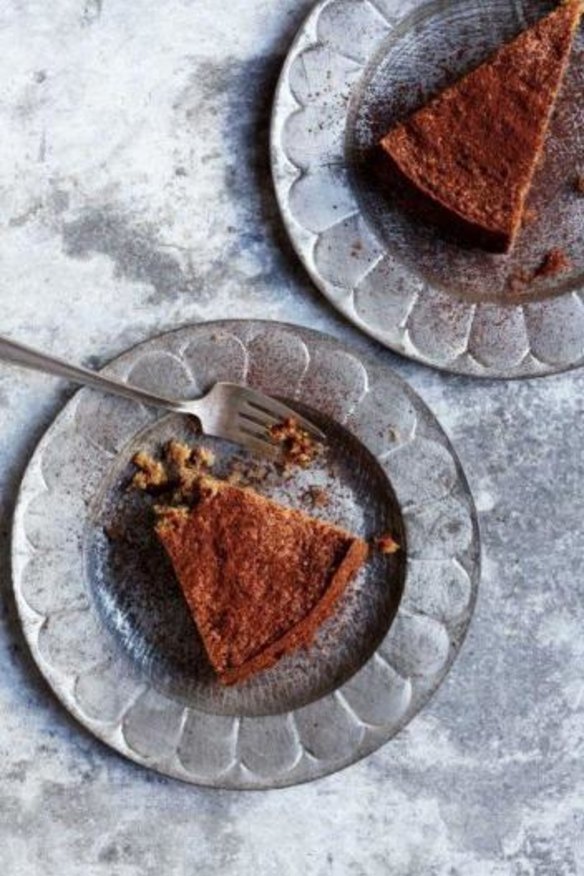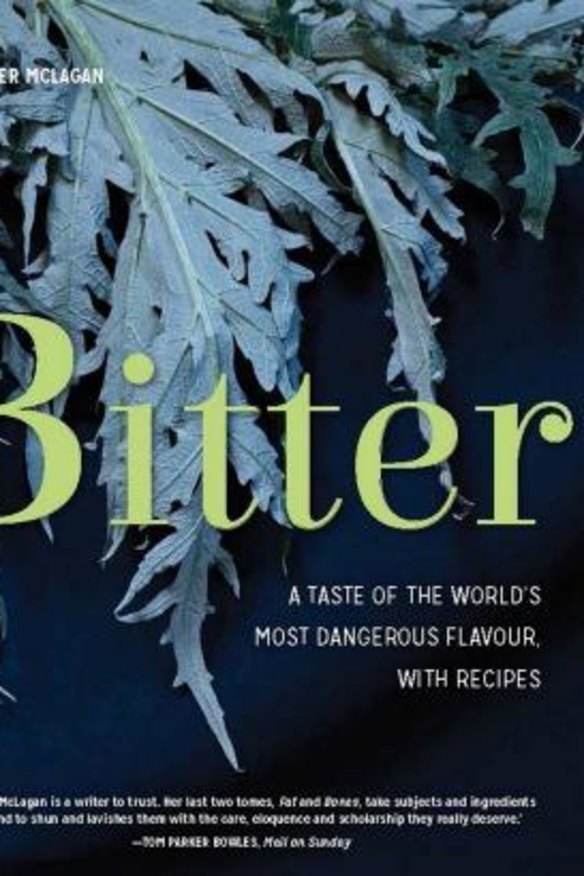Why bitter can be better in cooking

It was time, Jennifer McLagan thought, to let people know that she does indeed eat vegetables. Her first three books, what she calls her "carnivorous trilogy", could well have had people thinking she was a voracious, single-minded flesh eater. First, there was Bones, a paean to the neglected joy of flesh on the bone, near the bone, in the bone – glazed ribs and duck legs and bone marrow, ossobucco and lamb shanks and whole fish.
Fat followed, becoming the James Beard Cookbook of the Year in 2009. Melbourne-born McLagan was drinking champagne in Paris with The New York Times food writer Mark Bittman when the awards were announced.
"Does that mean I beat you Mark?" she asked. He said, "Yes". She said, "Well now I feel good". McLagan is nothing if not competitive. In Fat, she challenged her readers to cook and eat and embrace without guilt a much-maligned and "misunderstood" ingredient. Its pages drip with butter and cream, pork belly, lard, bacon and duck fat.

Toronto-based McLagan was hardly less confronting with Odd Bits, an ode to offal. The pale amputated trotters of a pig grace the cover.
And now comes her fourth book, Bitter – "another unloved subject that needs some rehabilitation". Think puntarelle chicory and grapefruit, radicchio and brussels sprouts, turnips and beer. These ingredients have, as Bitter's cover claims, "the world's most dangerous flavour".
"I think I've always had a love of bitter things; without bitterness we lose a way to balance sweetness, and by rejecting it we limit our range of flavours. Food without bitterness lacks depth and complexity."

There is a connecting thread between McLagan's food-writing present and her Melbourne past. Her mother cooked with bones – oxtail and ham and split-pea soup – and, as was typical for the time, fearlessly with fat.
Mrs McLagan cooked tripe in white sauce and onion, ox tongue for Christmas and, on Sunday nights, her daughter's thrill at Disney on the television and a laptop meal was tempered by what would frequently be on the plate – brains and bacon. "I can remember eating the crumbs off the brains and putting the brains in my pyjama pocket."
And Mrs McLagan fed young Jennifer grapefruit. Grapefruit was the starting point for Bitter. "I grew up with bitter grapefruit," McLagan recounts in her introduction to the book, the idea for which started to percolate after a conversation with a friend. Where had all the bitter grapefruits gone, they lamented. "The grapefruit of my childhood have been replaced with pink, sweet ones."
While studying economics and politics at university, she worked part time in the kitchen at a suburban restaurant where the Swiss chef had bedroom eyes and she discovered just how much she enjoyed the process of cooking. "What I liked about cooking was doing something physical with your hands, making something."
She would never use her university degree. At the William Angliss catering institute in Melbourne, she instead learned to break down a lamb, make a classic sauce and roll out perfect pastry. Over the next few years, through the tail end of the 1970s, McLagan's cook's tour would deposit a store of food memories: the kitchens of Melbourne's posh Southern Cross Hotel where "the saucier was always sauced". The upstairs-downstairs world of the American ambassador's residence near Regent's Park in London. And she remembers Paris. McLagan visited the city for a weekend. "I just realised I'd been stolen by gypsies at birth and taken to Australia and I belonged in Paris."
McLagan and her Canadian sculptor husband, Haralds Gaikis, spend four months of the year at their Paris home south of Montparnasse in the 14th arrondissement. "I go for white asparagus and all those spring fruits through mid-April to mid-June and then I come back to Paris in October for the mushrooms and the game."
Bones started as a small article for a magazine. "I didn't want ever to do a recipe book because I think there's more than enough recipe books; I wanted to do a book that put the food into some sort of context, that had more interesting things in it." McLagan has brought the same attitude to Bitter. There are recipes but she also includes fragments of thought, research, particularly on the matter of taste science, history and trivia.
So, she explains, the world's most expensive vegetable is the hops plant, Humulus lupulus. In Belgium, its bitter shoots sell for up to €1000 ($1500) a kilogram. Chefs saute or blanch them quickly then add to salads or serve them with cream and nutmeg. Hops growers eat them raw with beer.
The Italians, she notes, are crazy for bitter flavours, especially in chicories, variously known as chicory, endive, frisee or escarole. They've extended that bitter taste to their amari – bitter drinks such as Ramazzotti, Fernet-Branca, Campari and Averna. (For her part, McLagan's preferred cocktail is a negroni, that fashionable aperitif of Campari, gin and sweet vermouth.)
McLagan is yet to try cow bile, a bitter ingredient used to flavour offal stews in the Philippines. "After I'd been talking about it, lots of people told me where I could get my hands on it so I guess I'm going to have to go and try some."
Bitter: A Taste of the World's Most Dangerous Flavour, with Recipes, by Jennifer McLagan (Jacqui Small, $49.99)
Walnut cake
This rich, moist, dense, not-too-sweet cake is perfect with an espresso. If you have a Seville orange, use it, but a regular orange is fine, too. This cake improves with keeping and is really better a day or two later, if you can wait.
Serves 8–12
160g walnut halves
2 slices white bread
150g unsalted butter, diced
130g sugar
4 eggs, separated
¾ teaspoon ground cardamom
pinch of fine sea salt
1 seville or regular orange
pinch of cream of tartar
cocoa powder
Preheat the oven to 180C. Butter a 23-centimetre spring-form cake tin and line the base with a round of parchment paper.
Spread the walnuts and bread slices on a baking sheet and place in the oven for 10 minutes, or until the bread is dry and the nuts are lightly toasted. Leave to cool slightly. Lower the oven temperature to 160C. Put the butter in the bowl of a stand mixer with the paddle attachment. Set three tablespoons of the sugar aside and add the remaining sugar to the butter. Cream the butter and sugar until they are light and fluffy. Meanwhile, place the walnuts and toasted bread in a food processor and pulse until finely ground.
Add the egg yolks, one at a time, to the creamed butter and sugar, beating well after each addition. Stir in the ground walnut and bread mixture, then add the cardamom and salt.
Finely grate the zest from the orange and add to the mixture; set the orange aside for another use. In a clean bowl, whisk the egg whites until frothy; add the cream of tartar, and continue to whisk until white. Add the reserved three tablespoons of sugar, one tablespoon at a time, whisking until the whites are glossy and resemble whipped cream. Add a large spoonful of the egg whites to the walnut batter and stir to lighten. Tip the batter onto the egg whites and fold lightly until mixed. Pour the batter into the prepared tin and smooth the top.
Bake for about 50 minutes, or until dark golden and a skewer inserted into the middle of the cake comes out dry. Leave the cake to cool for five minutes, then run a knife around the edge of the cake and unmould onto a wire rack. Leave to cool completely, then dust with cocoa powder.
The best recipes from Australia's leading chefs straight to your inbox.
Sign up